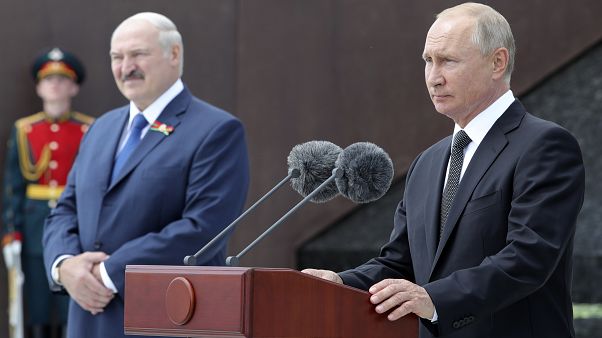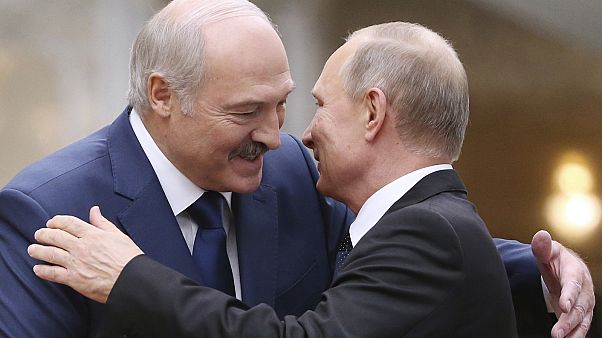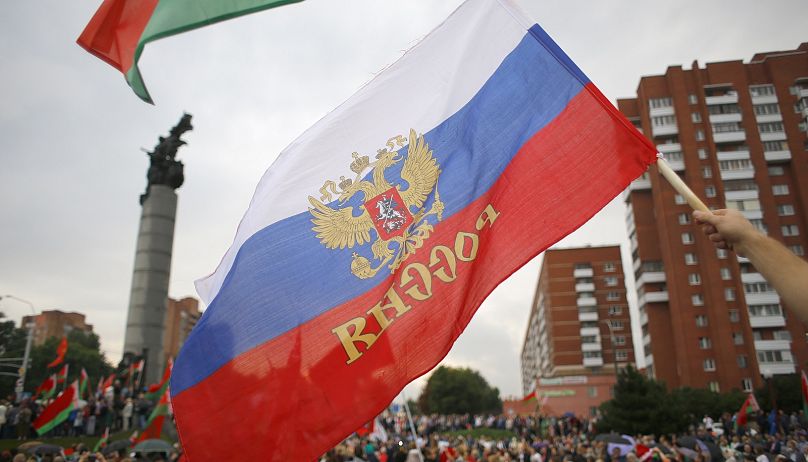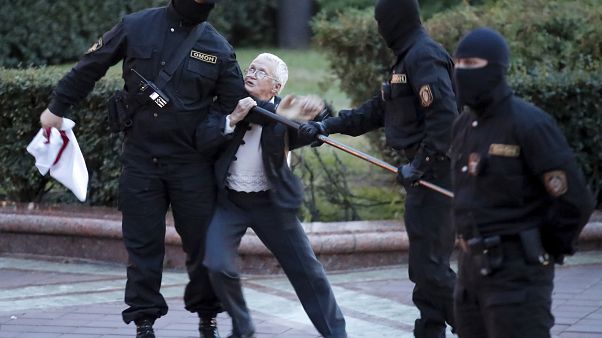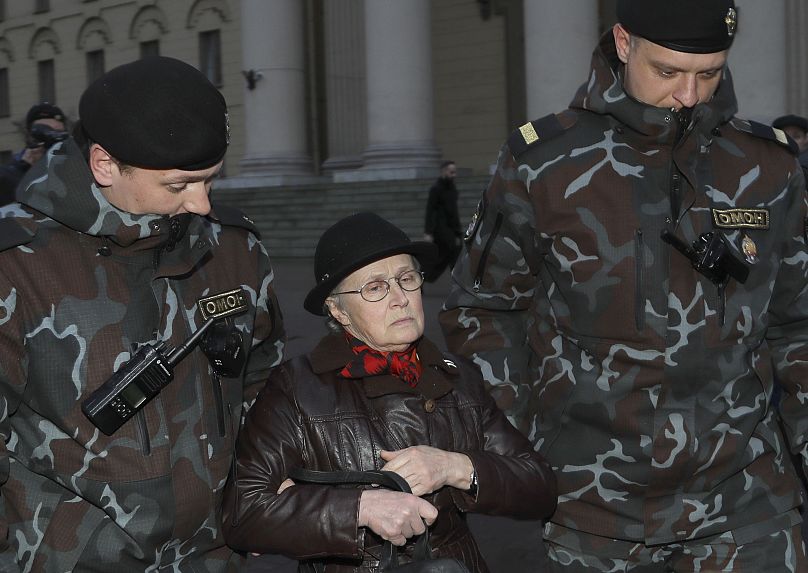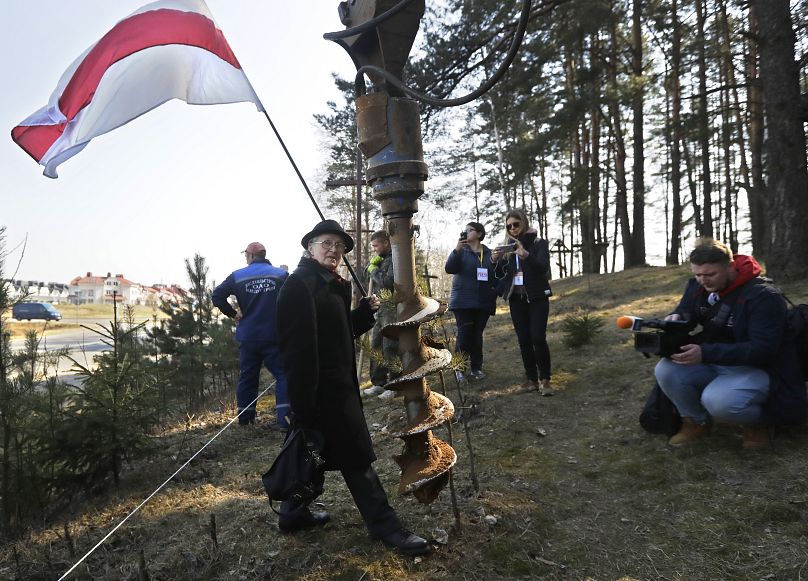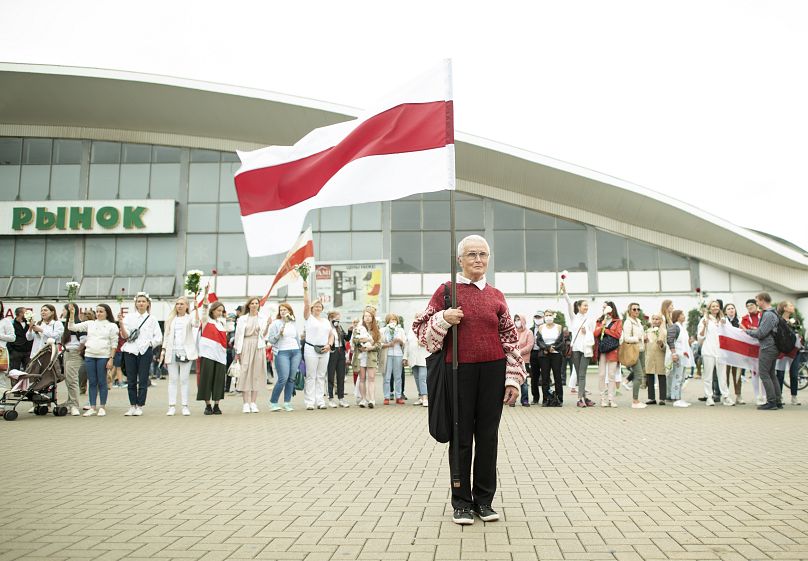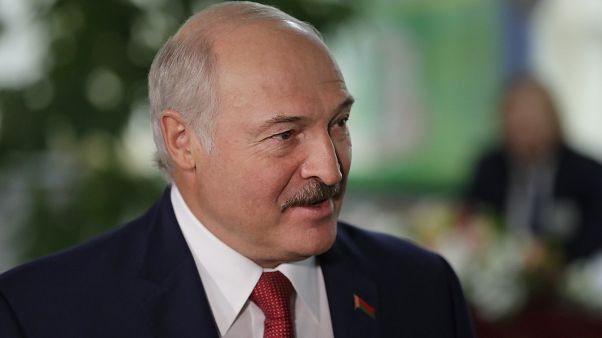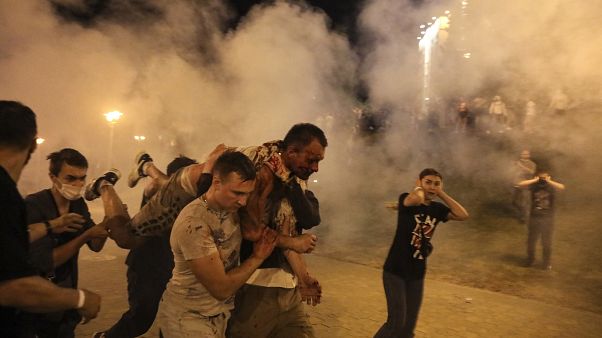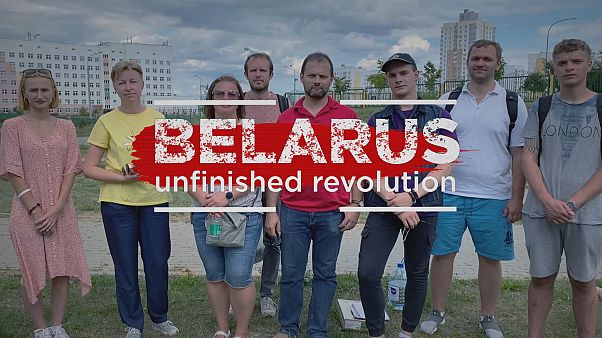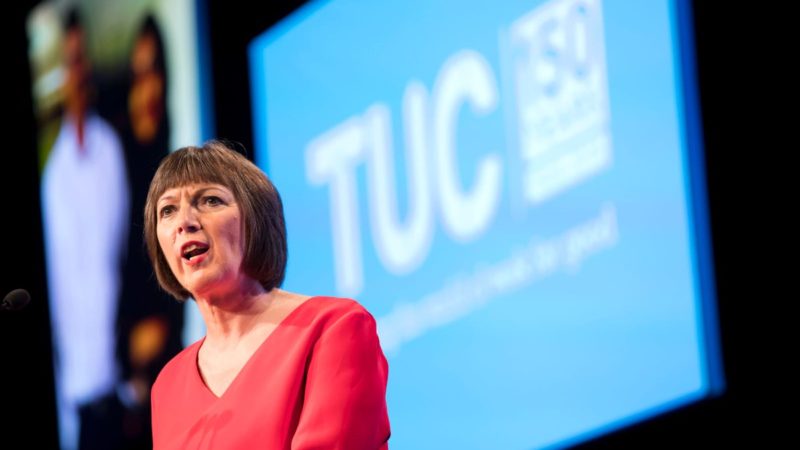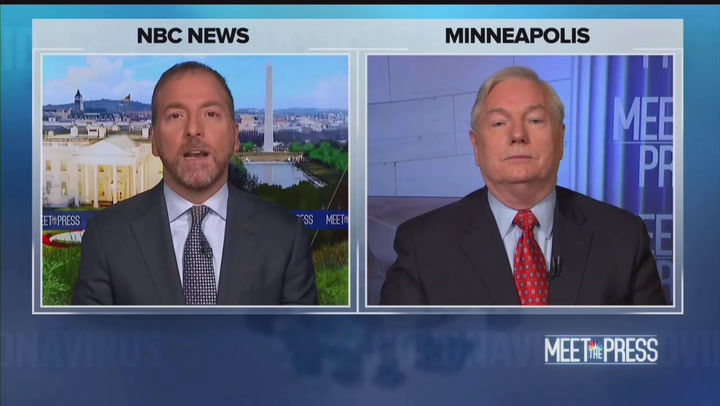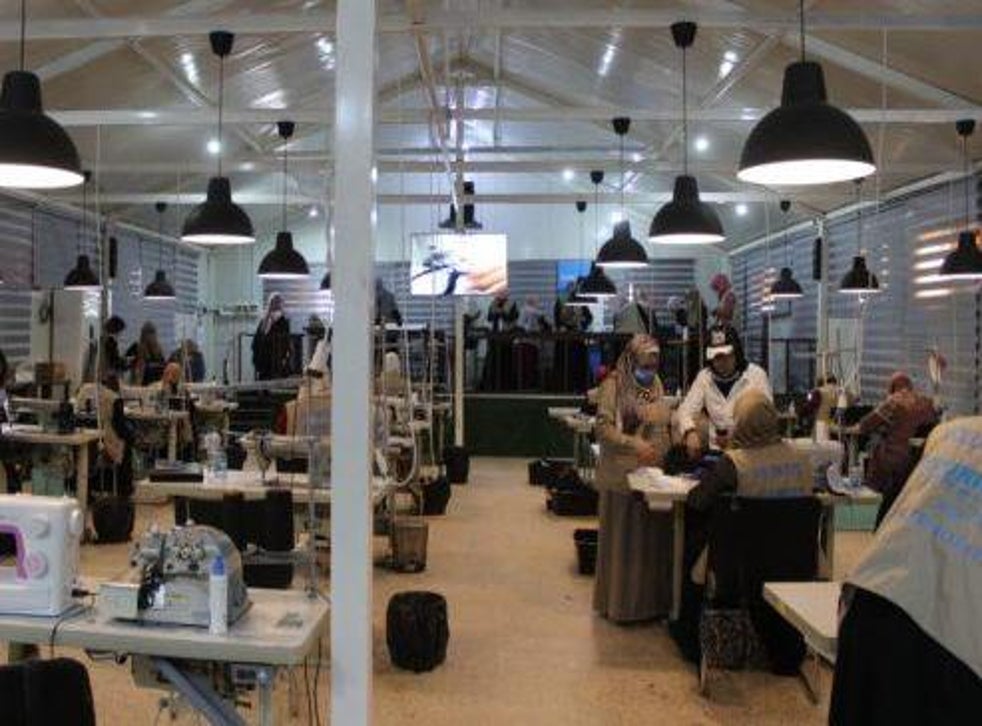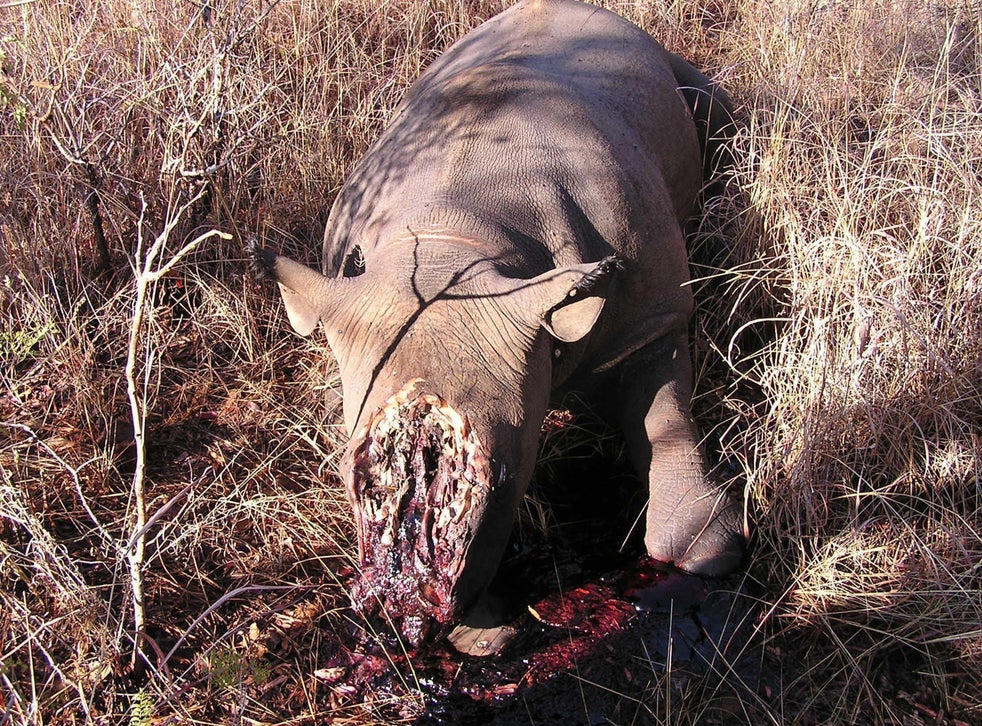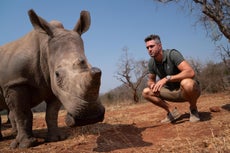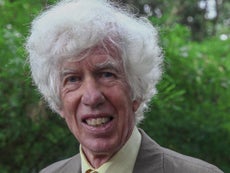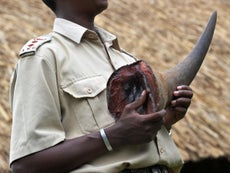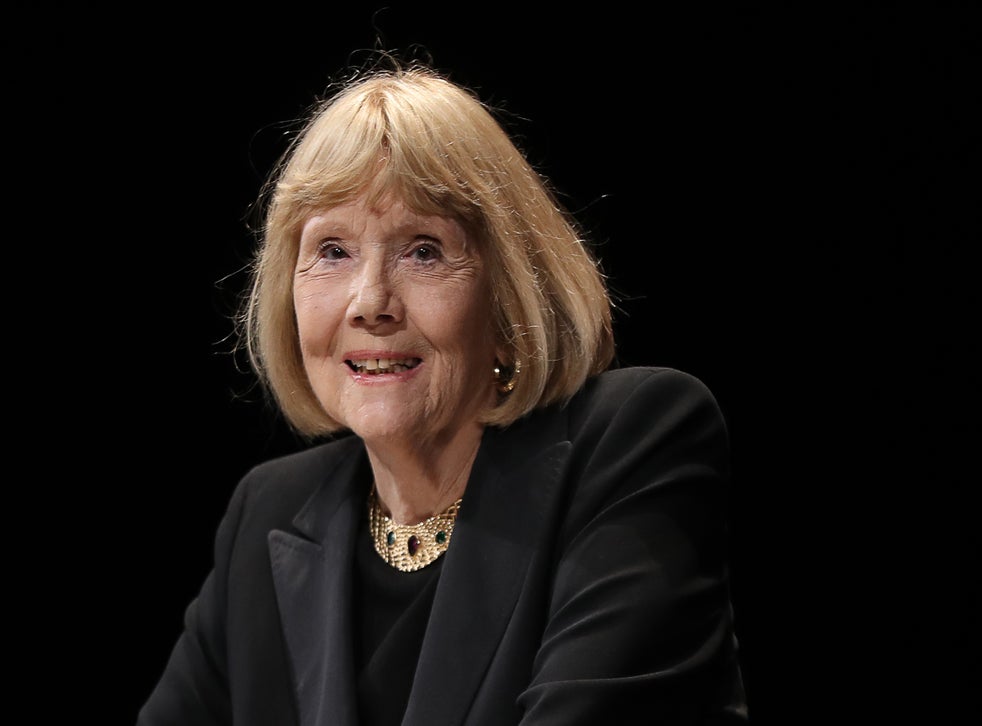By Seana Davis & Naira Davlashyan • last updated: 10/09/2020

The artist tells Euronews that her work "has to help and support people" through protests in Belarus. - Copyright INSTAGRAM @ania_redko_
One month on from Belarus' disputed election result, the opposition movement remains active on the streets and online.
Despite a series of internet outages, citizens have grown accustomed to using social media, such as the popular app Telegram, to communicate and source information.
And through these channels, a number of photos and graphics have been widely shared, becoming symbols of the protests movement.
One digital illustration on Instagram by artist Anna Redko has received nearly 10,000 likes since it was uploaded on Tuesday.
The artwork shows Maria Kolesnikova - a leading figure of the Belarusian opposition movement - in the design of a famous Soviet WWII poster.
In 1941, artist Irakli Toidze designed a poster entitled "Motherland Is Calling!" as wartime propaganda to encourage conscription.
It showed a woman dressed in red, flanked by the rifles, and holding a letter of conscription, which encouraged citizens to sign up for the war effort.
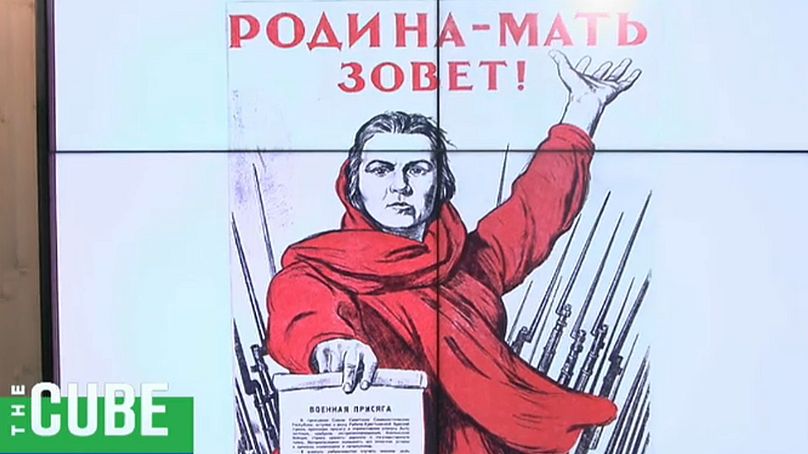
Anna Redko's design shows Kolesnikova, similarly dressed in red, surrounded by white flowers, which have been used by women in Belarus as a symbol of solidarity during demonstrations.
Kolesnikova is also pictured holding a ripped passport in her right hand, in a piece entitled "The Motherland is calling you, Maria".

ania_redko_"The Motherland Calls"# Belarus2020digital illustrationAnna Redko————————-# zhyvebelarus @kalesnikava #art #digitalillustration #mywork“Kolesnikova tore her passport so that she was not allowed to enter the territory of Ukraine, a source told Interfax-Ukraine.“It was a forcible removal from her native country. Maria Kolesnikova could not be taken out of Belarus, because this brave woman took measures to prevent her movement across the border,” said Gerashchenko, Deputy Minister of Internal Affairs of Ukraine.6d
They described her as a "hero" and the Deputy Interior Minister of Ukraine has also labelled Kolesnikova as a "brave woman".
Online users have noted the move of ripping up her passport as ironically become a symbol of patriotism, and has thrust Kolesnikova to the forefront of opposition feeling in Belarus.
A large projection of Anna Redko's artwork has also appeared on the wall of a high-rise residential building in Belarus' capital, Minsk.
Speaking to Euronews, Redko said her work had become a symbol of support for citizens.
"Now in Belarus, a lot of very important events are happening... everybody who is worried about what's going on, they want to support the people of Belarus, support people, and support justice.
"I'm painting especially to be with people and to show the situation from a different angle - the artist's angle."
"I do believe that art has to help and support people."
Click on the player above to watch Seana Davis' report.
